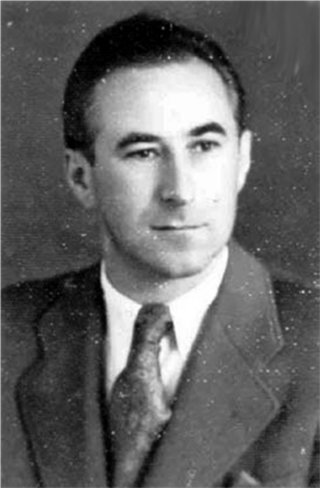Hofrat Mag. Siegmund Hirsch

Personalia
Born:
Died:
Profession:
Persecution:
Imprisonment 1941 - February 1944,
Auschwitz concentration camp February 1944 - 22.01.1945,
Buchenwald concentration camp 22.01.1945 - 06.02.1945,
Buchenwald Subcamp Rehmsdorf 06.02.1945 - April 1945,
Theresienstadt concentration camp April 1945 - 05.05.1945
KZ Number:
Memberships
Curriculum Vitae
Siegmund Hirsch grew up in Vienna as the son of a Jewish mother in a Christian farming family in Puch near Waidhafen a. d. Thaya, Lower Austria. After elementary school, he went to the secondary school in Waidhofen, moved to Vienna as a student trainee in 1936 and began studying law at the University of Vienna. In 1936, he joined the Alpenland student association.
After the Anschluss, he had to abandon his studies due to his Jewish descent and therefore lack of proof of Aryan origin and was able to get by with office work for friends. He maintained contact with resistance circles in the Waldviertel and supported French forced laborers deployed there until he was arrested by the Gestapo in 1941 on the basis of an anonymous complaint. At the trial before the special court in Vienna on November 16, 1942, he was sentenced to a year in prison "for spiteful and inflammatory statements against the Führer's foreign and domestic policy" in accordance with the "Treachery Act.
After serving his prison sentence in Vienna and Munich, he was not released but was handed over to the Gestapo and transferred to various concentration camps until the end of the war. He was first transported to the Auschwitz concentration camp at the beginning of February 1944. A short time later, he was assigned to the Jawiszowice satellite camp for work in the coal mines. Due to the advance of the Soviet troops, he was then transferred from the coal mine camp on January 19, 1945, first on foot and then in an open wagon to Buchenwald concentration camp, where he arrived on January 22, 1945. Here he was deployed in the Rehmsdorf satellite camp in the Brabag works. From there, Siegmund Hirsch was first taken by train to the border station due to the American advance and was then driven on foot in the direction of the "Protectorate". After a death march - prisoners who were left behind and without strength were shot - he reached Theresienstadt via Komotau in mid-April, where he was put on sick duty. The concentration camp was liberated by the Russians at the beginning of May.
Places
Persecution:
Residence:
Citations
Krause, Peter/Reinelt, Herbert/Schmitt, Helmut (2020): Farbe tragen, Farbe bekennen. Katholische Korporierte in Widerstand und Verfolgung. Teil 2. Kuhl, Manfred (ÖVfStG, Wien) S. 125/126.; Photo: ÖVfStg
